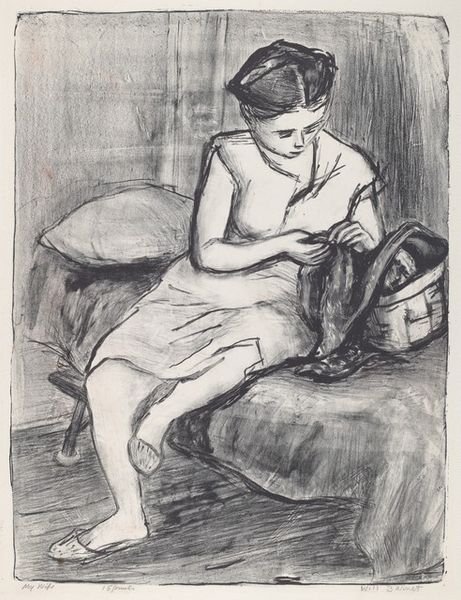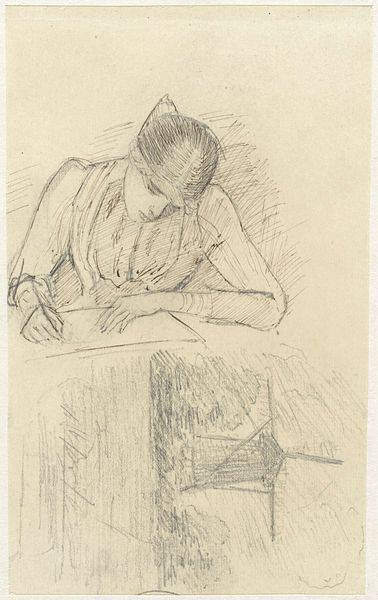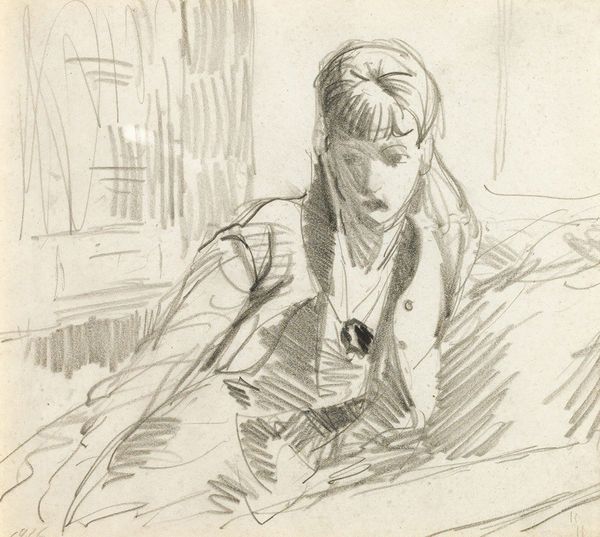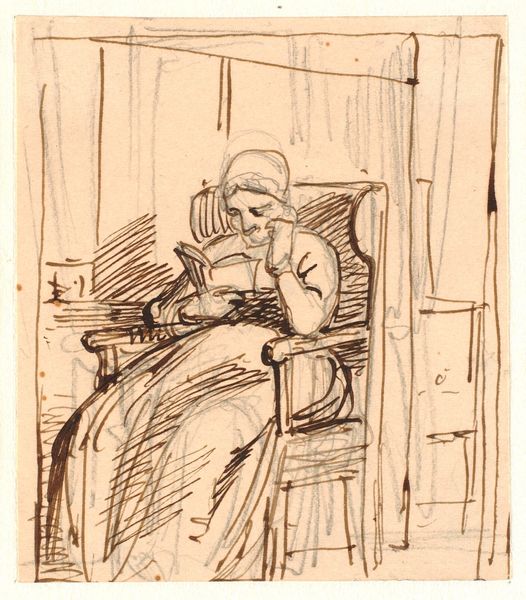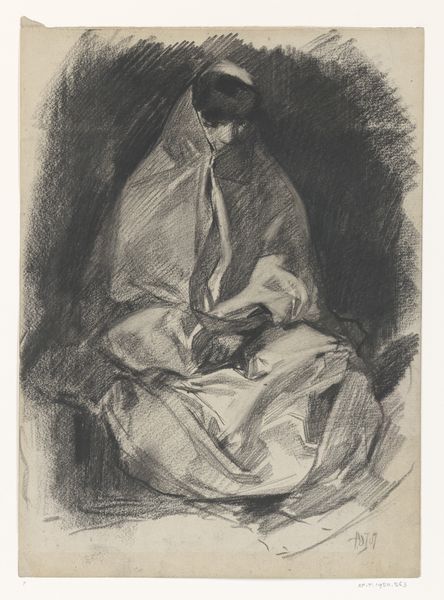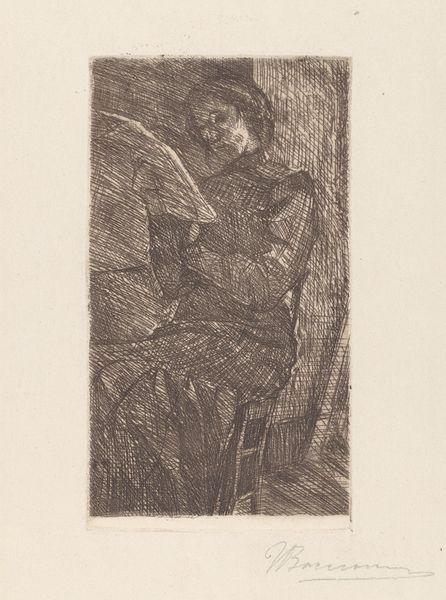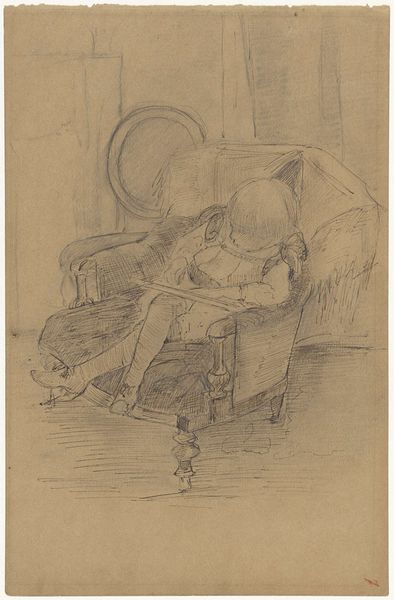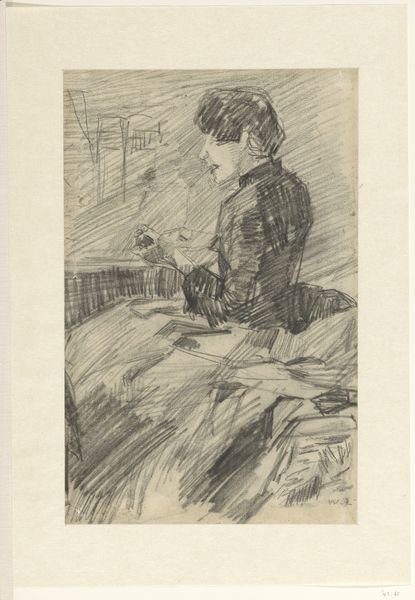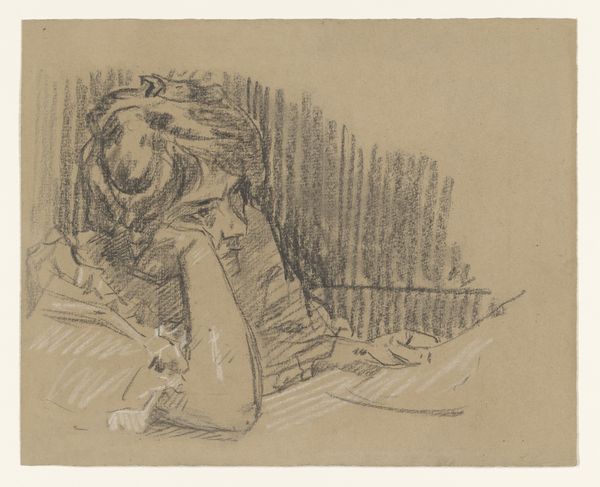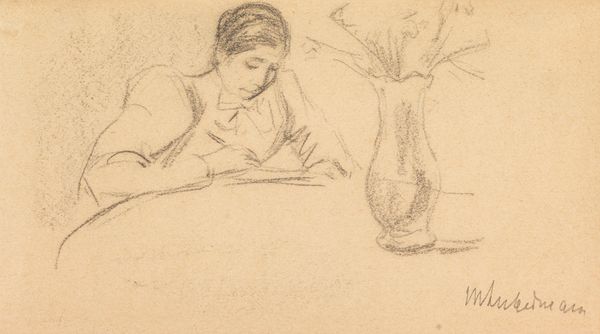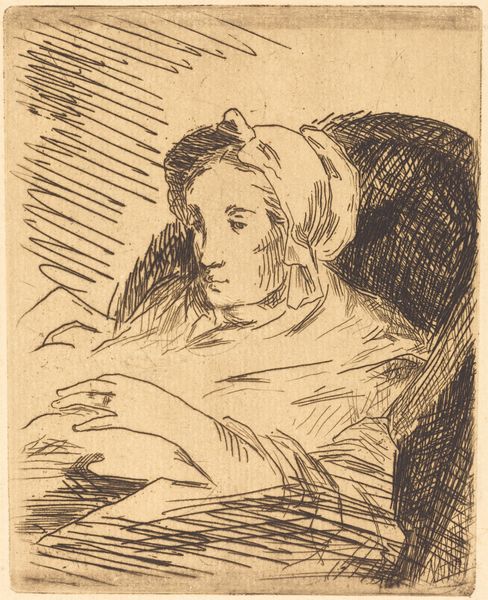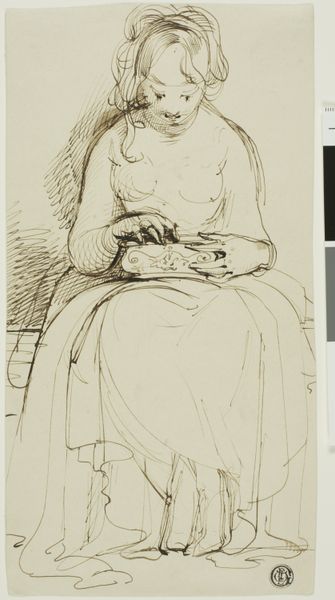
drawing, pencil
#
portrait
#
drawing
#
pencil sketch
#
figuration
#
pencil drawing
#
pencil
#
portrait drawing
#
realism
Dimensions: height 360 mm, width 270 mm
Copyright: Rijks Museum: Open Domain
Curator: So here we have "Lezende vrouw", which translates to "Reading Woman," a pencil drawing possibly made between 1893 and 1895 by Georges Daniel de Monfreid. What's your initial impression? Editor: Intimacy, definitely intimacy. The soft lines and monochromatic palette create a feeling of quiet observation, as if we’re intruding on a very private moment. Curator: That's interesting. I'm drawn to the texture itself, how the pencil marks create depth. Looking closely, you can see the build-up of graphite, particularly in the background. It points to a clear labor process of adding material and density in certain parts to bring others forward. Editor: The composition too. The figure fills most of the space, and the slightly downward angle really pulls you into the woman's world. You know, the subject being absorbed in the text... it makes me wonder what she's reading? What's capturing her attention so completely? Is it a romance, some philosophical treatise... Curator: The realism apparent is interesting considering de Monfreid's association with the more post-impressionist circle around Gauguin later in life. A piece like this highlights the artistic training, maybe even the influence of academic traditions, on even the most radical of artists. How did he balance this technical skillset and more 'artistic' explorations of color and subjectivity later on? Editor: It's fascinating to consider. I get this sense of vulnerability here too. It reminds me a little of portraits by Käthe Kollwitz where there's this similar intimacy combined with simplicity in execution. Almost like Monfreid's pencil is trying to get past surface appearances, seeking something deeper... Curator: Well, thinking materially again, you have to consider the portability of a pencil drawing in that historical context, versus something like oil paint. Maybe it reflects more spontaneous observations made with available resources; the texture is raw in the way it presents its production, if you will. Editor: True, and speaking of production… she could be reading about the plight of workers in a textile mill, a commentary on the artistic elite turning to craft? Ha! Now that would be a clever twist. Jokes aside, I leave this image now more grounded than when I came, oddly enough. The work gives pause... Curator: Right. This focus on basic materials highlights the infrastructure behind art. Seeing labor like this gives the viewer agency too, in thinking of all it is to "make art."
Comments
No comments
Be the first to comment and join the conversation on the ultimate creative platform.
